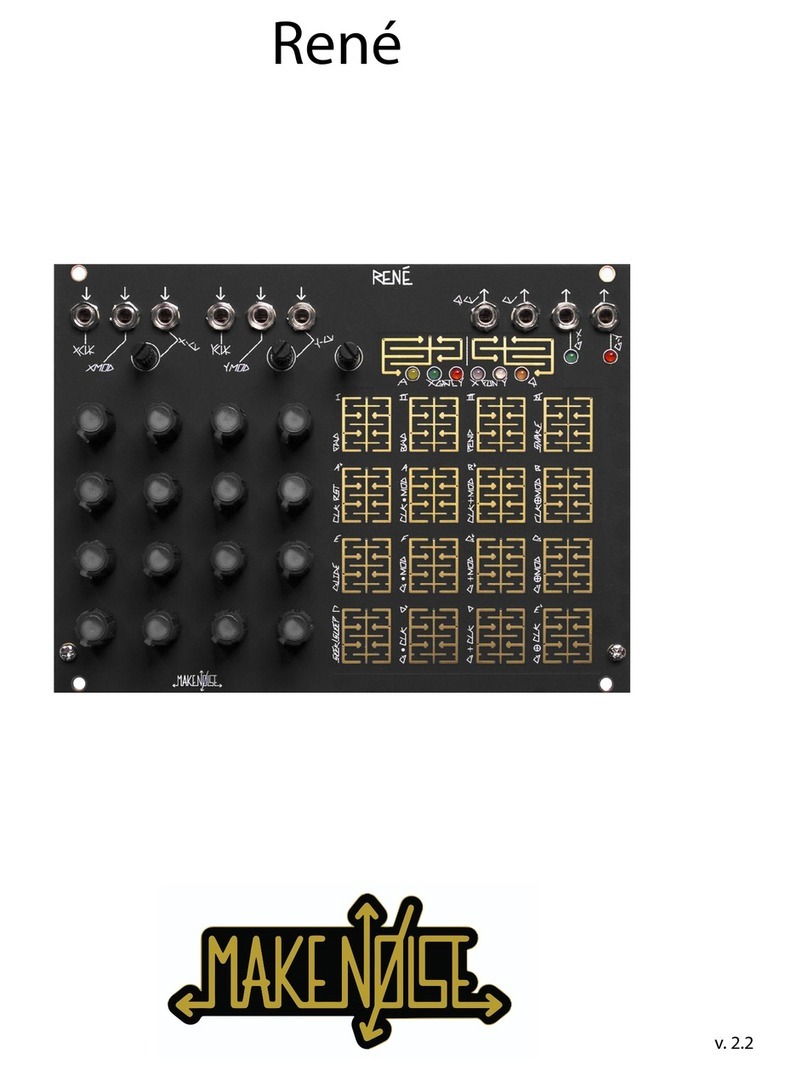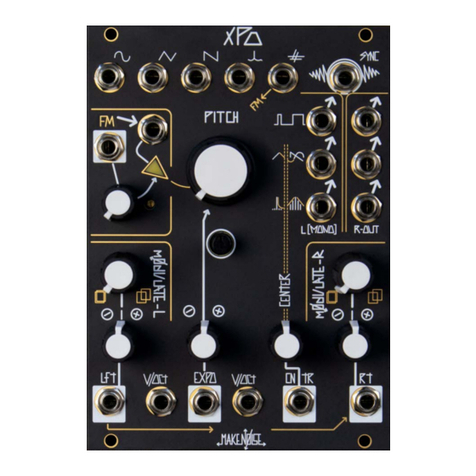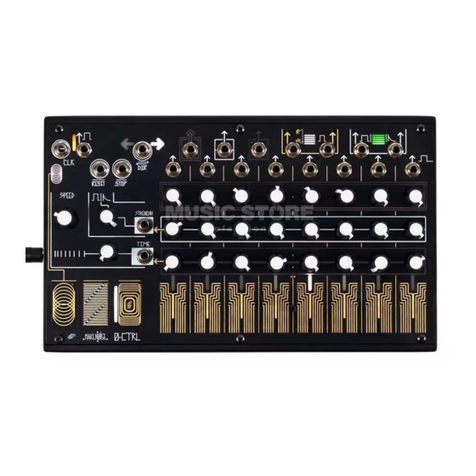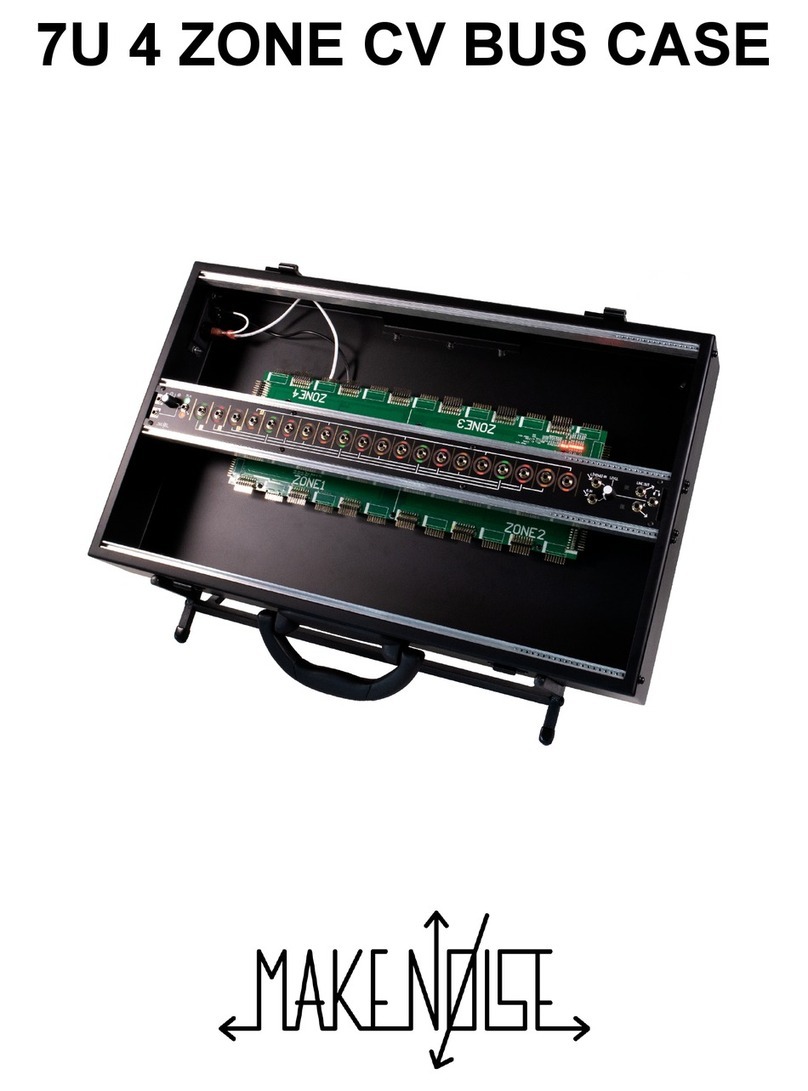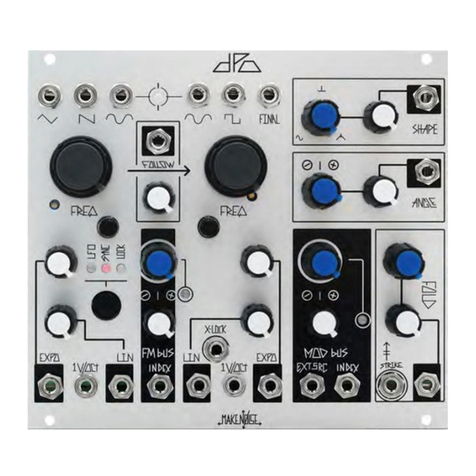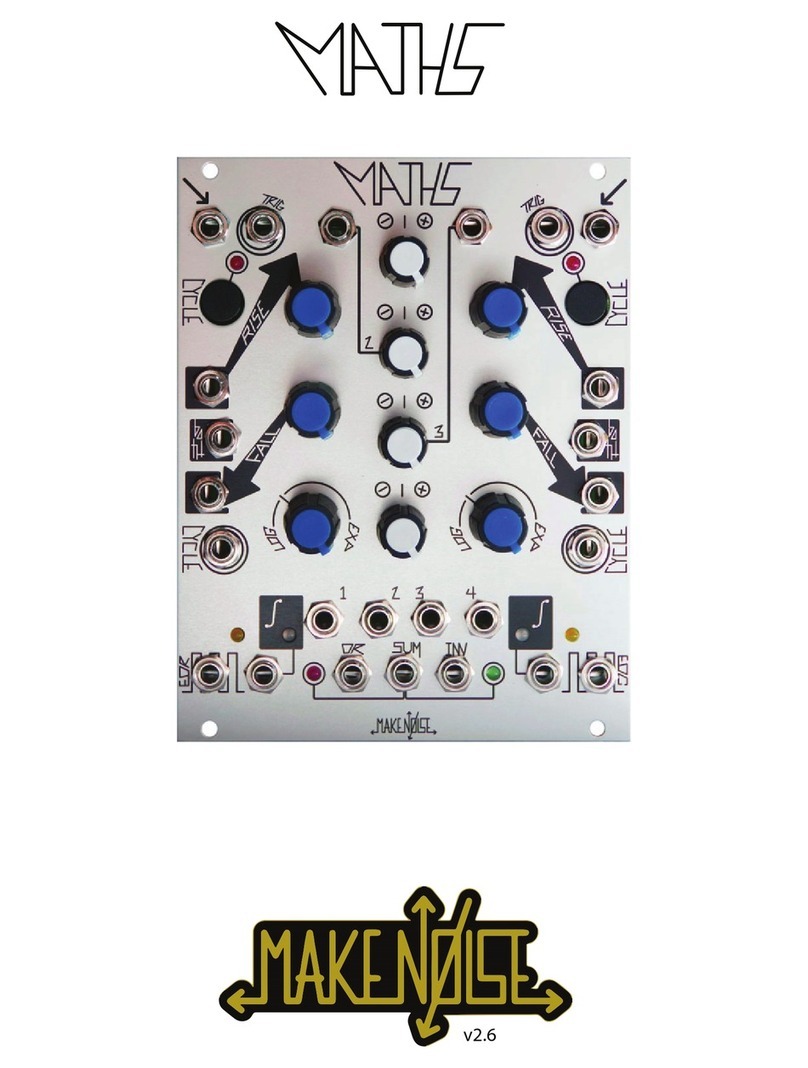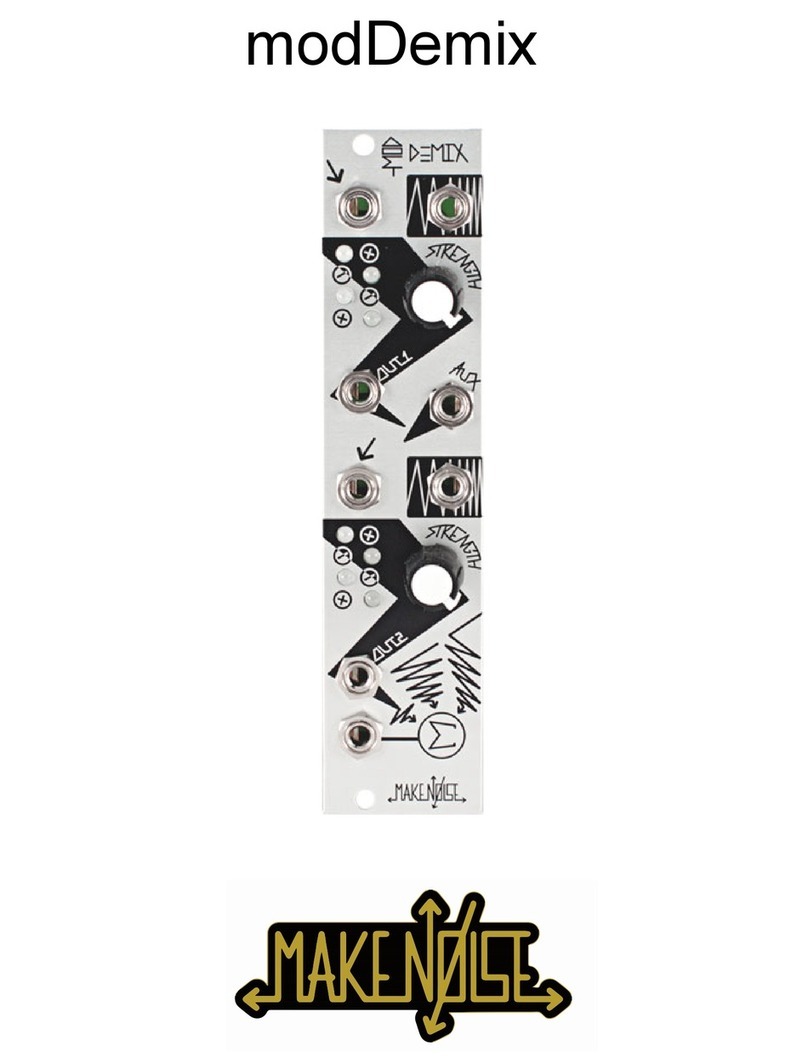
9
GETTING STARTED
The RxMx contains 6 Low Pass Gate circuits. The LPG is a specialized type of synthesizer circuit developed byDon Buchla, where
the amplitude of the signal is not only frequency dependent, but also under Voltage Control.It is in essence, a Voltage-Controlled
Filter and Amplier, a VCF A. Traditionally, the Lowpass Gate has had a very mild lter slope of 6db/Octave. This mild ltering,
combined with the use of an optoisolator-based gain cellthat turns o, allows for simultaneous control of both the amplitude and
frequency domains.
LEVEL and STRIKE
As the LEVEL parameter becomes more positive, the amplitude of the processed signal increases with the lower frequencies being
more quickly amplied than high frequencies. As the LEVEL parameter become less positive,the amplitude decreases with the
high frequencies being attenuated much sooner than the lower frequencies. The net eect is fast, transient modulation of the
signal LEVEL the low frequencies will be more pronounced-- lurking in the spectrum, as the high frequencies are eagerly
diminished.
Manual manipulation of the controls will not well display this phenomenon. A fast/short envelope CV of around +8V will provide
beautiful example of the RxMx’s ability to produce acoustic like attack & decay transients. Theprocessed signal will seem to ring,
not unlike a struck drum, piano string or xylophone bar. The Strike INput allows for ease in programming percussively-animated
sounds, taking advantage of these characteristics of the Low Pass Gate circuit. A Gate patched to the Strike Input will intiate a
fast/short control signal to briey open the LPG to 100% for a moment before closing with a very organic decay.
The RxMx is called a macro-lowpass-gate because it has 6 LPG circuits that share a single set of LPG controls.These shared controls
are the LEVEL and Strike parameters discussed in the paragraph above. The LEVEL and Strike controls may be applied to any of the
6 LPG circuits in CH. 1 through 6. The CHANNEL and RADIATE parameters are used to determine to which of the 6 channels the
LEVEL and Strike parameters are applied.
CHANNEL and RADIATE
With CHANNEL and RADIATE Full CCW and no modulation (nothing patch to CH SEL CV IN 1 or 2, or RADIATE CV IN), “CH. Zero” or
no channel is selected and no radiation is applied to turn on adjacent channels. Therefore, none of the 6 Channel Drive Indicators
will be lit-- even if LEVEL and/ or Strike parameters are modulated, you will get no signal(s) at any of the 3 outputs unless you have
something patchedto Aux A and/ or Aux C (this is because the Aux Ins are not processed by the CHANNEL, RADIATE, LEVEL and
Strike parameters).
Setting CHANNEL to around 8 o’ clock will select CH. 1 and if LEVEL and/ or Strike is modulated (or LEVEL Panel Control is manually
set to greater then 8 o’ Clock), you will see the CH. 1 Drive Indicator LED fade on asthe LEVEL parameter is increased. A signal
present at CH. 1 IN will appear at Out A or Out B (dependingupon which Out is patched), at a level based on the CH. 1 Attenuator
and the LEVEL and Strike parameters. If the CHANNEL parameter is increased CH. 2 through 6 will be selected and the associated
Drive IndicatorLED will light and signal patched to selected channel will appear at the associated Out based on the settingof the
associated Channel Attenuator and LEVEL and Strike parameters. Notice that with RADIATE Full CCWand no modulation applied to
radiate CV in, only one channel will be active at a time.
